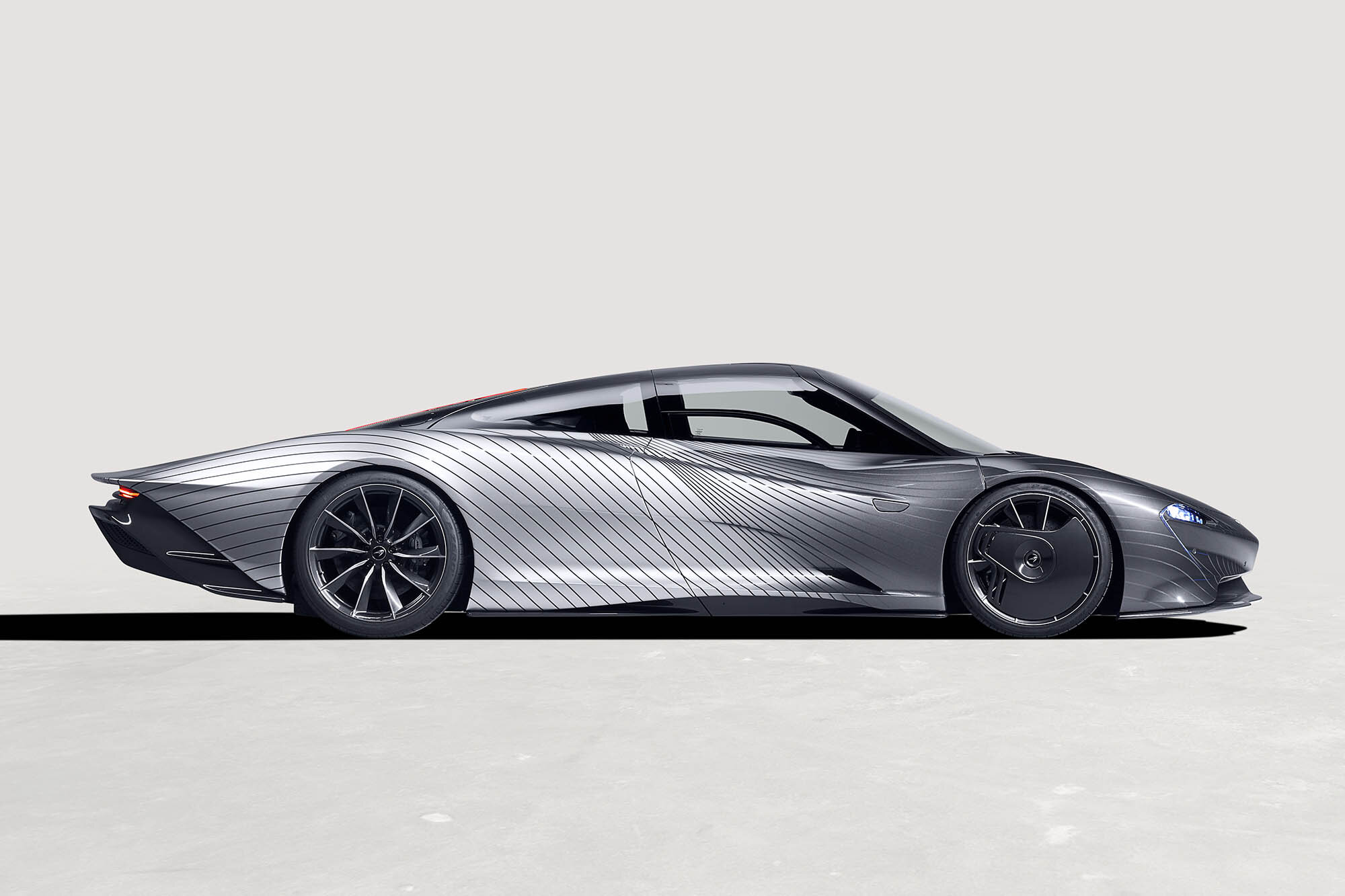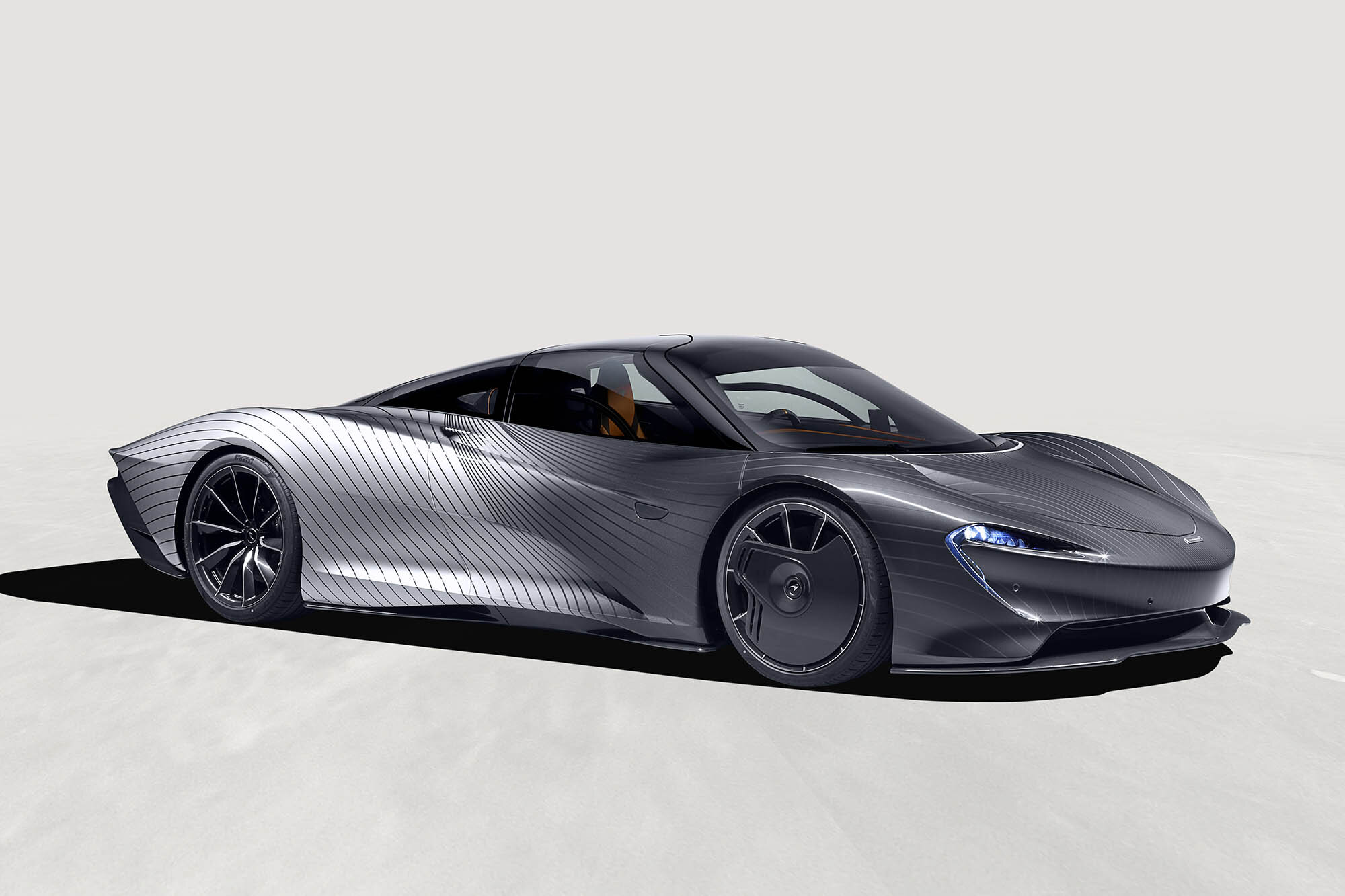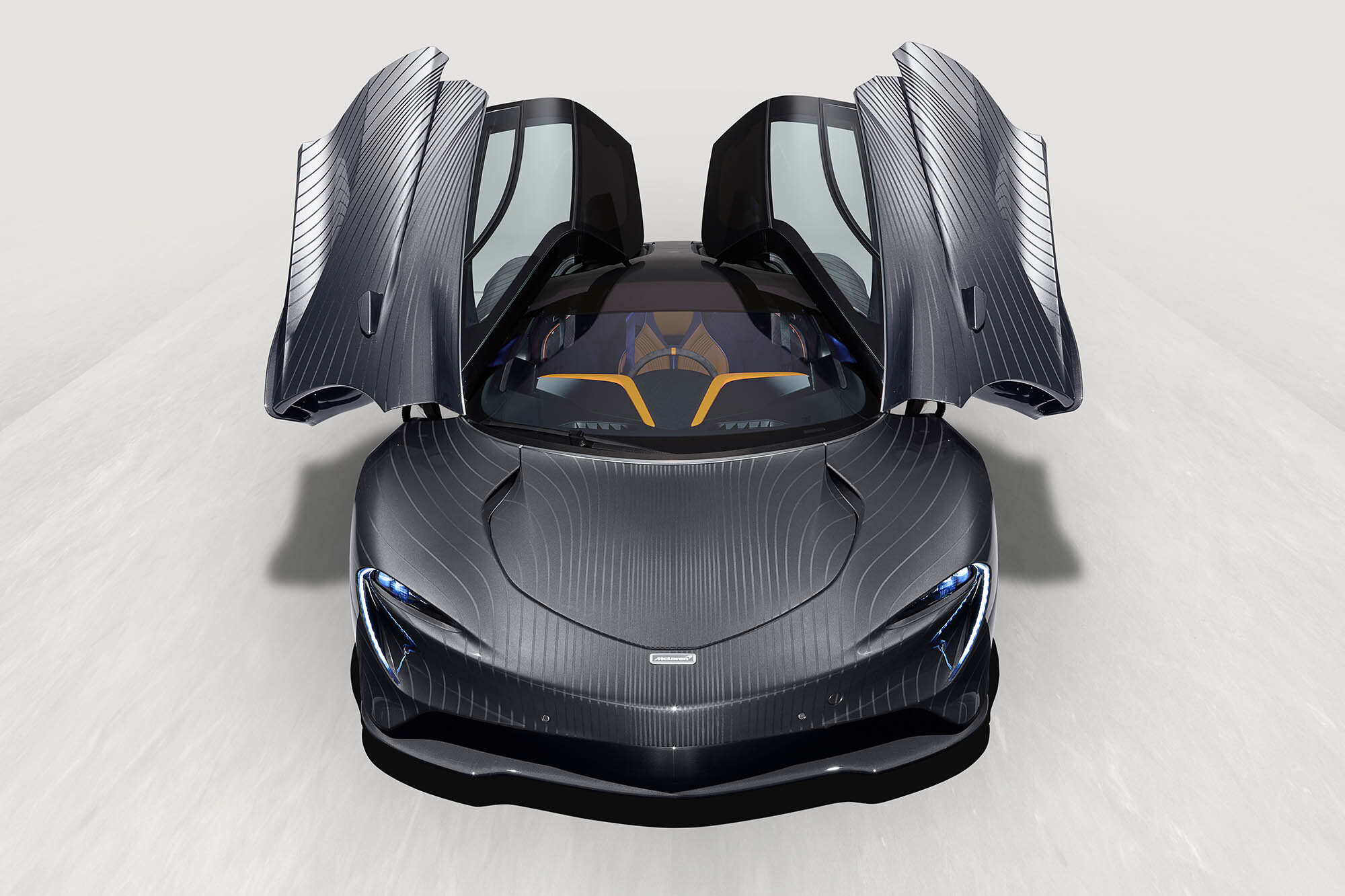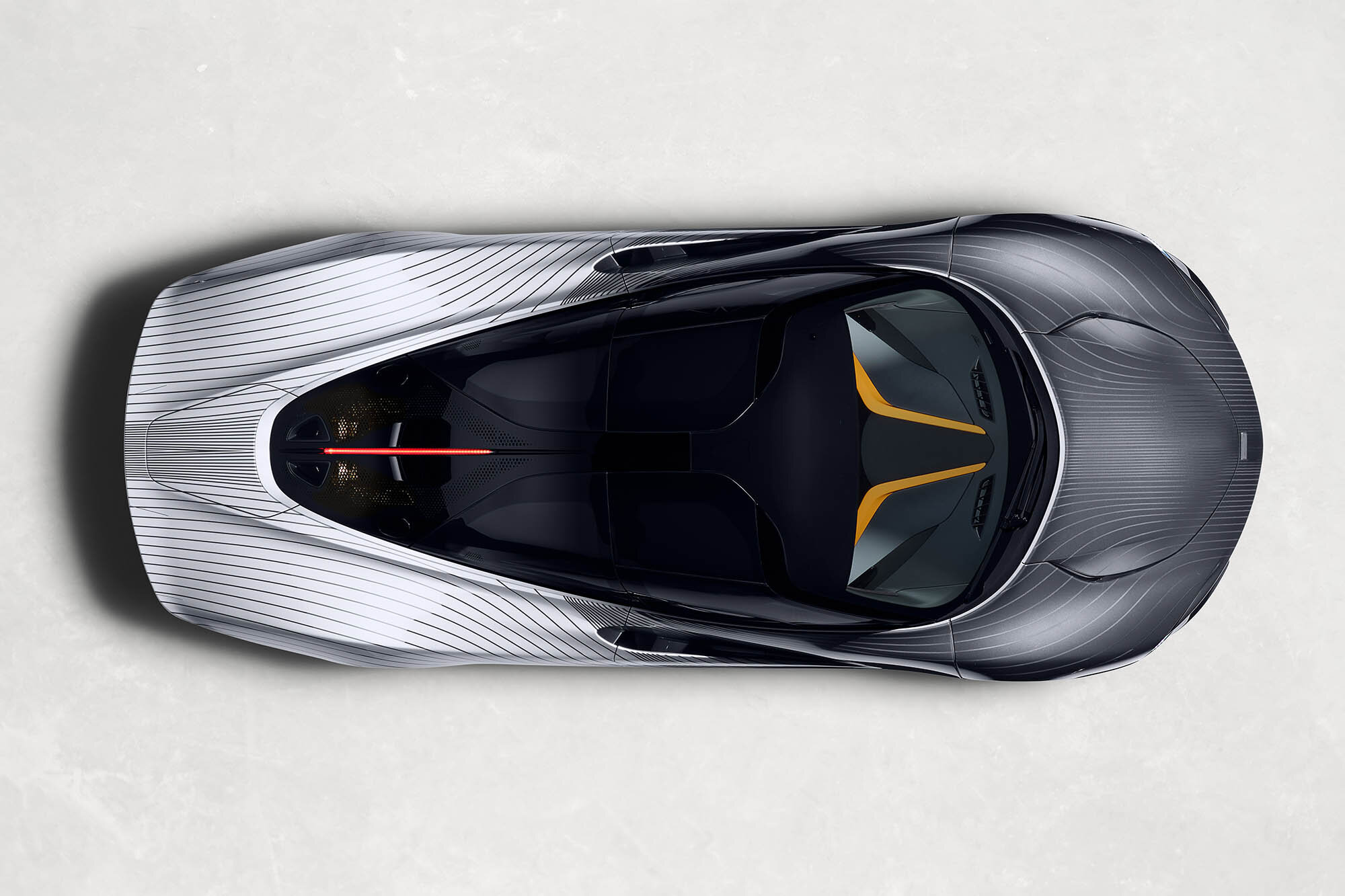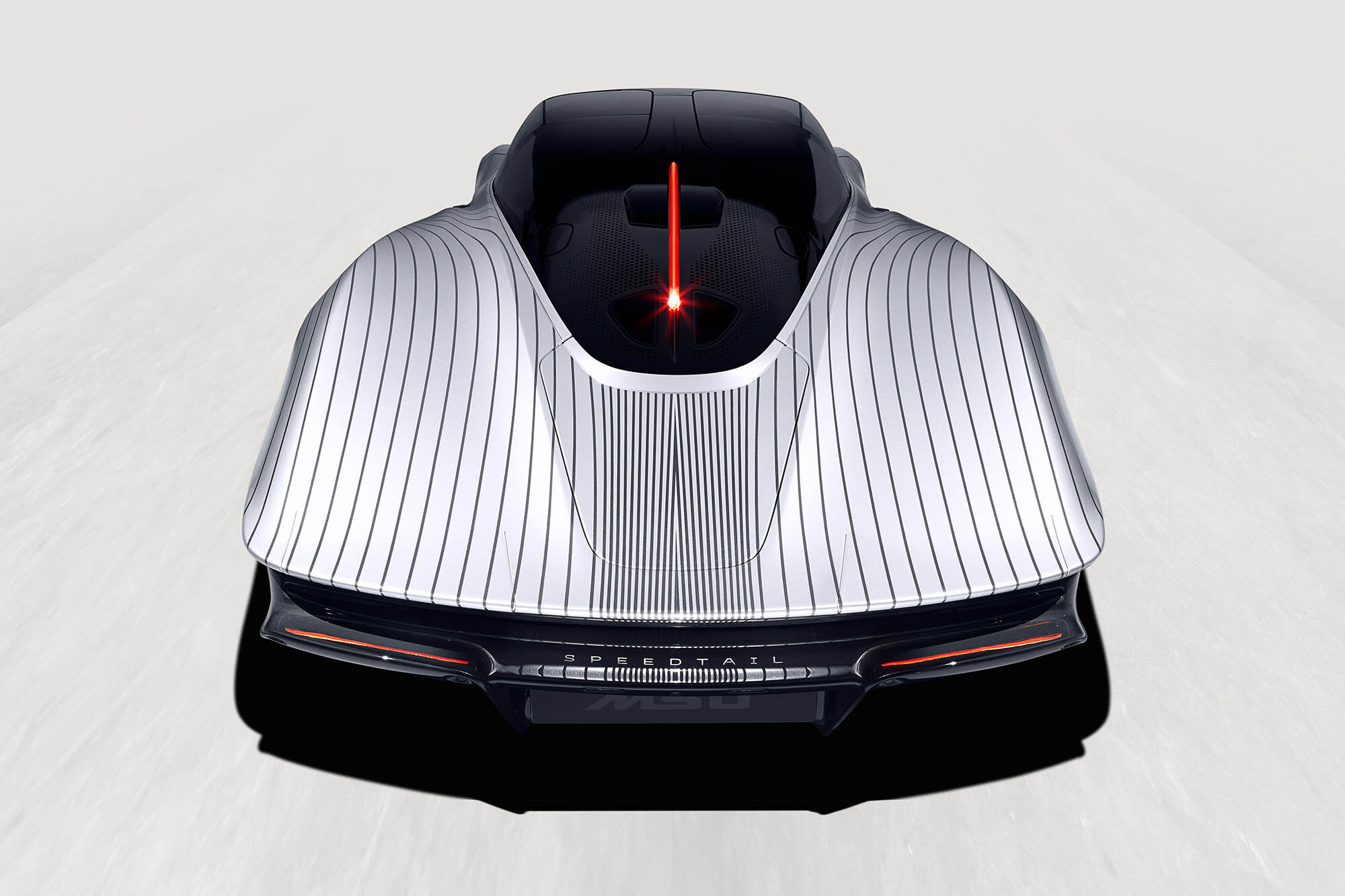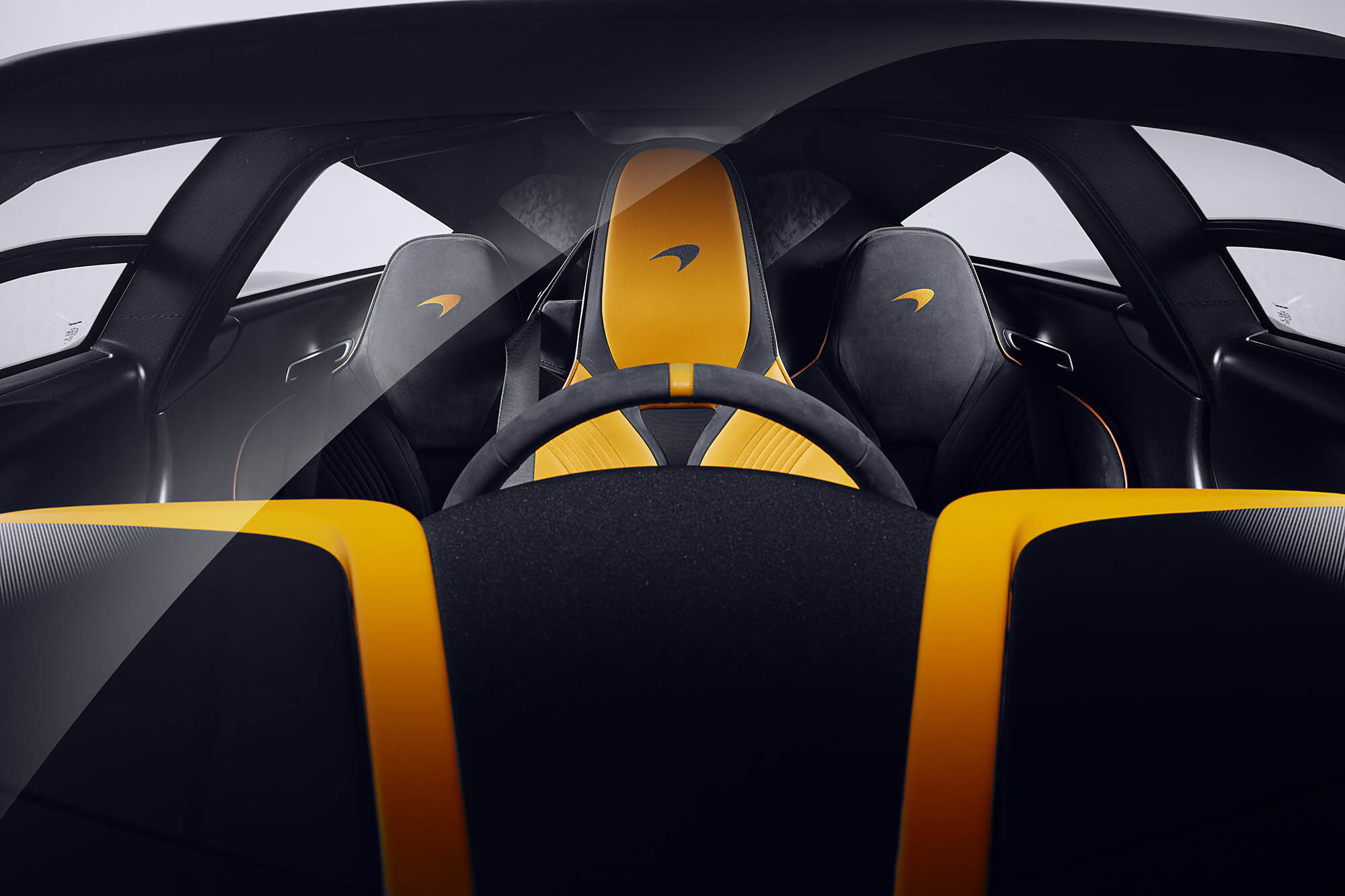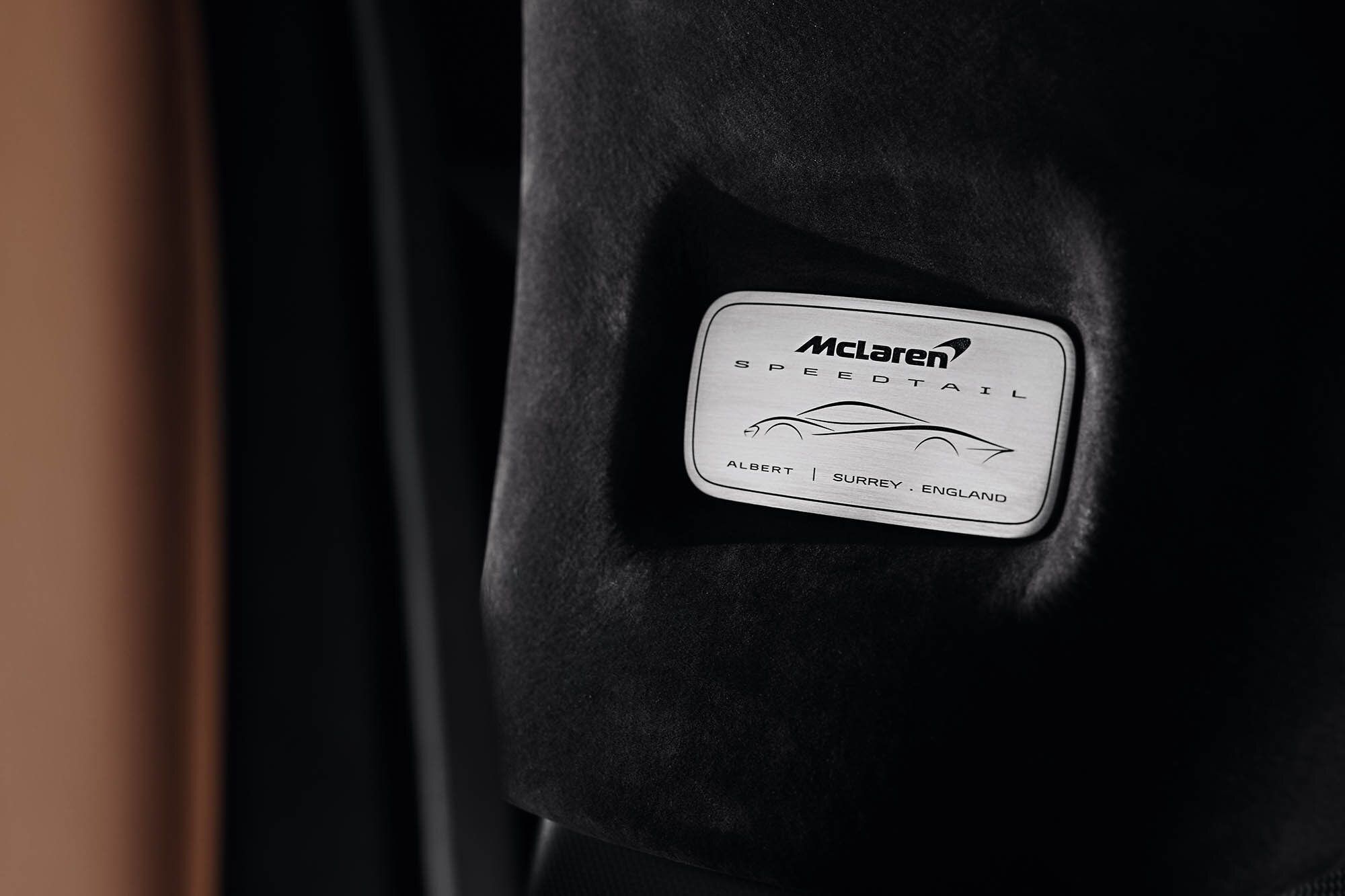McLaren's ‘Albert’ Speedtail
McLaren Special Operations (MSO) recently unveiled the ‘Albert’ Speedtail, a bespoke commission by McLaren Beverly Hills. ‘Albert’ is one of the final vehicles in the 106-car Speedtail production run and an homage to the first Speedtail testing vehicle from 2018. Echoing the name of the 1992 McLaren F1 test mules, which were named after the Albert Drive premises in which the F1 was designed and built in Woking, the original MVY02 Speedtail prototype vehicle was christened ‘Albert’ as a respectful tribute to its three-seat predecessor.
The ‘Albert’ prototype vehicle was developed to validate the concept of the Speedtail’s central seat driving position, testing driver ergonomics and visibility and rear-view camera positions. Originally built with the front panels from a 720S, the ‘Albert’ prototype was the first Speedtail to be driven on public roads.
The exterior design ‘camouflage’ was achieved by a simple two-metre vinyl body wrap with design lines printed to represent the optimised airflow over the car. The ‘Albert’ Speedtail carries on this legacy, sporting one of the most complex paint themes ever completed by MSO.
The colours selected for the ‘Albert’ homage are Magnesium Silver – the colour that the F1 road car was first shown in at the 1992 Monaco Grand Prix -and Ueno Grey, the colour of the F1 GTR that won the 24 Hours of Le Mans in 1995. The full design treatment is closely based on the 2018 vinyl ‘camouflage’ wrap.
Due to the incredibly complex and detailed nature of the paintwork design, the MSO team completed test panels first to understand process feasibility and worked alongside the visualiser team to refine renders. In total, ‘Albert’ would require a 12-week post-build modification at MSO’s facility to reach completion; this included two week’s masking, six week’s painting and the remaining time to dry and reassemble the vehicle after spraying.
Referring to large scale print-outs of the renders, the livery masking was completed by two specialist paint technicians. This had to be completed on the built car, with wheels fitted, to ensure accurate cross-panel alignment of the design as it flows around the vehicle. In total, the masking of the livery required almost two kilometres of fine line-out tape to complete the initial design layout.
The six-week painting process required the car to be disassembled to ensure complete accuracy and flawless finish. The paint blend effect was located on the door applique’s outer body panels with the front painted in Ueno Grey and rear in Magnesium Silver.
Photos © McLaren

